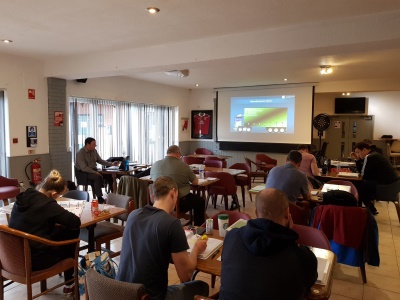Don’t dismiss driver checks
 Sam Law, brand and project manager at the Lloyd Morgan Group, says walkaround checks are a vital area of focus for driver training
Sam Law, brand and project manager at the Lloyd Morgan Group, says walkaround checks are a vital area of focus for driver training
Whatever the size of your delivery fleet, ensuring vehicles are roadworthy is essential both for safety and to avoid costly vehicle downtime. Yet the Office of the Traffic Commissioner (OTC) estimates that 85 per cent of roadside fines for infringements could be avoided if the driver had performed a walkaround check before beginning a journey.
Operators need to have the confidence not only that their drivers are undertaking these checks, but more importantly, that they are doing them correctly. Your drivers don’t need to be mechanical experts, but they do need to be able to identify and report potentially dangerous defects.
An effective walkaround check will help protect your O-licence and improve your operator compliance risk score (OCRS).
Improving the effectiveness of your driver walkaround checks and ensuring compliance could not be easier, with a combination of the right training, the right materials and a monitoring program in place.
The correct training will ensure drivers have a full understanding of their obligations and the appropriate skills required to conduct a proper check of the vehicle and report any defects every time they use it.
Amongst their obligations, for example, is to always undertake a walkaround check before they drive the vehicle – even if the vehicle is being handed over to them by another driver.
Effective training will fully explain how to conduct vehicle checks, so your drivers know exactly what potential defects they are looking for and how to quickly identify any problem areas. It will also include how and why defects should be reported and documented.
Ensuring drivers understand the role they play and the impact they have on a company’s O-licence is also essential to meet your legal requirements and remain compliant. As an operator, you should document all evidence of training as this can be used as evidence to support any dialogue with the Driver & Vehicle Standards Agency (DVSA).
As well as helping drivers to complete their report, using the right tools will provide operators with an effective means of evidencing that their vehicles are thoroughly checked by the drivers daily.
The best way of doing this is to equip drivers with either a paper-based vehicle check and defect report book, or an electronic walkaround app. Whichever method is used should include all items listed in DVSA’s latest Guide to Maintaining Roadworthiness.
Once you are confident that your drivers are carrying out their walk around checks properly and understand how to report any defect, you should a have a system in place to monitor their performance.
One way to identify any potential issues is through Driver Pre-Use ‘Gate Checks’ using an independent third-party auditor to stop drivers leaving or entering your site to simulate a visit by DVSA. The auditor will check the daily vehicle walkaround report sheet completed by the driver and carry out a physical walkaround check of the vehicle themselves.
The auditor will supply a summary report for all vehicles and trailers checked at each site which will help identify potential training needs and areas of exposure. The audit report also provides further evidence of the training and monitoring in place to ensure the roadworthiness of your fleet.
Lloyd Morgan Group is a leading independent transport compliance solutions provider, and can be contacted for further information or advice via the website.











